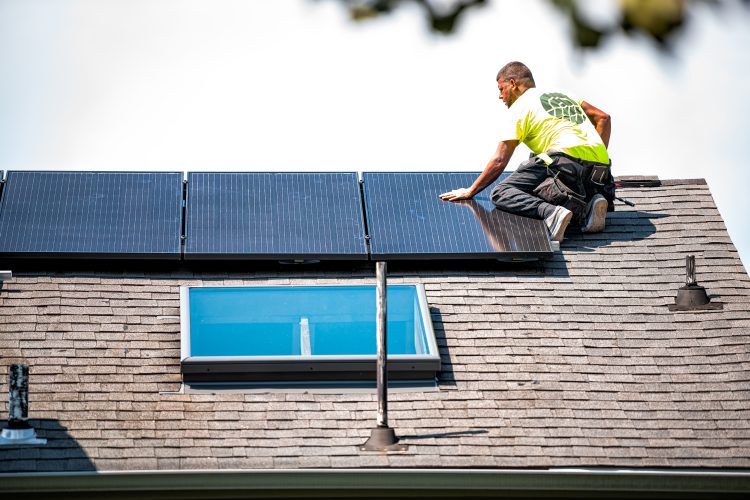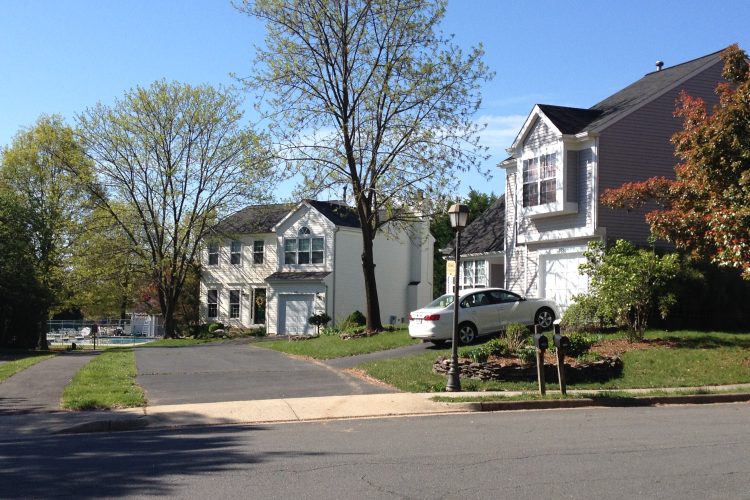March 16, 2022
Are Courts Critical or Deferential towards HOA Decisions?
Many homeowners can tell that the boards and committees of their community association are making wrong decisions that prejudice their rights, but struggle to articulate the legal basis for why the decision is bad. Attorneys inexperienced with HOA law sometimes write demand letters to community leaders sprinkled with legal jargon such as “breach of fiduciary duty,” “arbitrary and capricious,” “lack of due diligence,” or “bad faith.” Sometimes, a problem has a clear answer, because a statute, contract or bylaw provides an unambiguous rule. However, statutes or governing instruments often give boards and committees some discretion in fulfilling their duties and exercising their rights. The board may have to decide whether to go with one management company over another. There may be differences of opinion as to whether roads must be resurfaced next year or in five years. The board may have to decide whether to buy play equipment aimed at toddlers or 5th graders. HOAs frequently find themselves revising or applying architectural guidelines as the community ages and owners submit new applications. The establishment of a board or committee presupposes that they will deliberate and decide among various choices. Collective deliberation is supposed to produce correct decisions, or at least follow a process which, if followed, members will accept even if they disagree.
If the legal text provides a clear, unequivocal answer, its easy for the attorney to advise the client whether the breaching party could be successfully sued. Where the rules allow the board to make a debatable decision, and members have varying views as to the wisdom of that decision, one must consider what standard the court is likely to apply. Should the court defer to the board’s judgment, as the elected representatives tasked with making such decisions? May the judge substitute her own judgment for that of the board? Judges know that its important to apply appropriate standards in similar situations, so as to promote fairness and consistency. If they could pick their own dockets, many judges would not prefer to deal with many community association lawsuits. HOA cases tend to be quite acrimonious, involve obscure legal doctrines, and require extensive reading of lengthy written instruments. At times, it may be unclear whether the judge is applying a conventional interpretation of an established rule or is merely trying to rationalize a decision he sees as appropriate given how it will resolve the dispute. Legal methods vary in the many judicial opinions deciding legal challenges to HOA or condominium decisions or resolving covenant enforcements disputes. There are reasons why different standards appear in different cases, from “strict scrutiny” to more deferential approaches. Different legal doctrines may apply to the same legal dispute, from specific provisions of the community’s governing instruments or contracts, amendments to the state statutes, or ancient yet flexible common law doctrines. It is essential for a homeowner to have a basic understand of judicial standards of scrutiny & deference in HOA matters. Otherwise, someone may mistakenly pick the wrong battle.
The first question is to determine whether the covenants and bylaws are clear or ambiguous. Where the terms of restrictive covenants (or really any kind of legal text) are clear and unambiguous, the duty of the court is to interpret them in accordance with their “plain meaning.” If the statute or covenant is ambiguous or vague, this will raise thorny questions. However, courts usually find the legal text to be unambiguous, and this makes it easier to identify the proper standard by which to evaluate the board’s action. In Virginia courts, there are three general standards of review applied by judges in community associations cases.
Doctrines of Plain Meaning, Strict Construction and Ultra Vires – When one looks to the governing instruments for an answer, and the instruments either provide a clear answer then principles of strict interpretation proscribe the HOA’s duty to act or refrain from acting in a certain way. The Association may not act in contravention of its governing documents. If it does so, such an act is void or voidable. Also, it the declaration enumerates a list of powers and certain things are conspicuously absent, then this may mean that the omission of such things from the text shows an intent to exclude such authority. Sometimes HOA boards to try to use architectural standards, administrative resolutions, committee charters, or handbooks to establish rules that are contrary to a statute or recorded instrument, or is not authorized by such instruments. The board can only exercise “business judgment” with respect to things that have been made its business by the operative language of the recorded instrument or statute.
Business Judgment Rule – According to the BJR, it’s not the place of the courts to second guess decisions that a corporate board is required to make in the performance of its duties. Exercise of the BJR will not be disturbed by the courts unless justified by those discrete facts that are properly pleaded and would justify judicial review, such as cases of fraud, bad faith, breach of trust, or gross mismanagement. Boards (and their advisers) are very attracted to the BJR because it is highly deferential to the HOA. HOA instruments often delegate broad authority to the boards with respect to the business of the development. Fraud, bad faith, breach of fiduciary duty, or gross mismanagement are easy to allege but difficult to prove. Application of the BJR requires the directors’ decision to be that of a business judgment and not a decision which construes and applies a statute, covenant or bylaw. The BJR is not a mega-doctrine swallowing up all the provisions imposed upon the board by the statutes or instruments. Its best not to pursue litigation against HOA boards on matters which clearly fall within the BJR. However, the instruments may be unclear, or they may clearly limit the board’s discretion. The BJR applies most naturally to decisions like which manager, landscaper or attorney to hire, when to replace the roof on the pool house, or what color to paint a shed. Its important to remember that the BJR is a doctrine imported into community associations from corporate law, where many decisions fall within either the “ultra vires” (void) or BJR categories. In corporate law, once a board power is treated as within its authority, it tends to become a part of the private affair of the management of the business. It is difficult to legally challenge decisions to which the BJR applies, absent an applicable covenant or bylaw, or the rare cases where fraud, dishonesty, criminality, etc. could be proven.
Rule of Reasonableness – The rule of reasonableness applies in HOA architectural control matters. Virginia courts strictly construe restrictive covenants because they are in derogation of the free use of one’s property. So one normally looks to whether the “plain meaning” of the restriction is ascertainable and violated in a particular instance. However, most HOA and condominium declarations contain additional provisions that require most architectural changes to the lot to first obtain approval from a board or committee. How do you reconcile notions of “plain meaning” and strict scrutiny” when the restrictions contemplate the HOA withholding or granting approval on a case-by-case basis? The Supreme Court of Virginia has held that a restrictive covenant for a residential subdivision which requires consent to construction or approval of plans of construction, even though the provisions of the restrictions do not establish standards of approval, will be declared valid when such covenants apply to all the lots as a part of a uniform plan of development. But such covenants will be enforced only when there has been a reasonable employment of such restrictions. Architectural standards have been found to pass the rule of reasonableness where applied uniformly, consistently and in good faith for a considerable period of time. It makes sense for the board to be held to a higher standard in the formulation of architectural restrictions because, in general, restrictive covenants are disfavored and strictly construed. Most architectural restrictions require the owner to obtain approval from a board or committee prior to making changes to the appearance of the lot. The rule of reasonableness prevents HOAs from unreasonably withholding approval for unjustified reasons. Note that the standards that may apply under a reasonableness inquiry don’t have to be expressly set forth in the recorded instruments. Bear in mind that the “reasonableness” standard is informed by the meaning of statutes, covenants, standards, etc. An approach can be unreasonable even if the board, its advisers and friends in the community feel it is reasonable. The reasonableness standard prevents architectural controls from becoming some sort of free for all, whereby the committee and board members and their friends get what they want out of the process, and those who want to improve their properties in other ways have their applications unjustifiably denied.
Having different standards makes sense. The exercise of architectural controls in a community is a quasi-governmental function, and not analogous to managing a business. To apply the BJR in the making, applying and enforcing of architectural standards would create an exception that would swallow the general principle of strict scrutiny of restrictions on the free use of property.
In some states, the courts no longer apply the rule of reasonableness, and instead apply the BJR to all instances in which the board gets to make a decision. Also, even if judicial doctrine imposes a reasonableness requirement on architectural rulemaking and decisions, the governing instruments may be worded in ways that maximize the board’s latitude. Furthermore, whether the BJR or the rule of reasonableness applies, in either case the judge is permitted to consider various legal texts and evidence of the facts of the case to formulate an equitable remedy or apply a defense. In a dispute between a HOA and its members regarding a decision, eventually the question will be asked whether strict construction, business judgment or reasonableness standard applies. Usually, the board will attempt to invoke the BJR or argue that the decision they made was required by the documents. For many property owners seeking to protect their rights, identifying the proper legal standard is essential. To take a case to trial, the owner will likely have to make a substantial investment of their time and resources. An owner will want to show that the board’s action fell outside of what it was allowed to do by the express language of the statutes or governing instruments, or that to the extent that exercise of discretion was called for, there are compelling grounds that there was unreasonableness, arbitrariness, bad faith, or self-dealing. Even where a fair interpretation of the governing instruments does not allow any board discretion, there may be other defenses that the HOA asserts, such as waiver, estoppel, laches, condonation, unclean hands, etc. that attempt to redirect the scrutiny back on the plaintiff. However, those kinds of defenses require a factually specific presentation at trial. Absent a clear letter or email that establishes such a defense, those kinds of defenses can be difficult to prove.
Legal Authority:
Bowman v. Wintergreen Property Owners Ass’n, 250 Va. 177 (1993)
Scott v. Walker, 274 Va. 209 (2007)
Lake Monticello Owners’ Assn v. Lake, 250 Va. 565 (1995)
March 1, 2022
Does Civility Still Matter in HOAs and Condominiums?
Community association disputes can become quite contentious. People will call others names or question their integrity in a board meeting. Others send “reply all” blasts attacking the ethics of neighbors, board members or managers. It is not surprising that emotions boil over in such communications, because everyone participating has some amount of “skin” in the game, be they a director called upon to make a vote, an owner who is more negatively affected than other members, or someone who is concerned that they won’t be able to pay a special assessment. Often people think that there are one or two bullies in the community, but the members don’t often agree which neighbor is the real bully. When a leader or neighbor seems to be ruining someone’s life or property, some people question whether notions of civility, decorum, mutual respect are still relevant. This reflects a larger discussion in the U.S. about the coarsening of manners and abandonment of civil discourse. As an attorney who counsels and advocates for property owners in HOA and neighbor disputes, the question of civility arises frequently. The question is most difficult in instances where there is one homeowner, whose use and value of their property is rendered practically uninhabitable because a majority of the board (and community members) do not want to take action to make sufficient repairs or alterations to the common elements so as to abate the problem (because it costs a considerable amount of money). Such a dispute can arise even if the governing instruments clearly delegate the responsibility to maintain the common elements to the board. For an owner whose home is being ruined, it is humiliating to have to listen to community meetings where a significant number of their neighbors are willing to jump on board with practically any idea or theory that could relieve them of the obligation to pay a special assessment so that the community can uphold its obligations to one or two specific other homeowners. In such instances, rational explanations seem to be fruitless. Sometimes, the “mob” is attracted to suggestions that the suffering party is to be blamed for their own misfortune. Some aggrieved parties feel they are being thrown under the bus by the majority in their subdivision, simply to save money. The HOA is a kind of “contract” among the owners, but sometimes the majority intentionally defaults on its obligations to one or two members, because they suspect that the party being damaged does not have the resources or capability to fight back legally. In other instances, there is a bully who is not on the board, but nonetheless uses unfounded threats to try to control their neighbors. In such situations, the notion of “civil discourse” can seem irrelevant because opponents are behaving in a selfish and irrational fashion, raising the question does one still have to be civil if everyone else is not.
The ancients taught three ideas that are important here. One is the golden rule: do unto others as you would have others do unto you. The second is what the ancient Greeks called parrhesia, which is the practice of speaking boldly for the common good, even if the act of speaking out is done at great risk to the speaker. The contemporary expression “Speaking truth to power” comes close to the idea of “parrhesia.” The third idea is to always behave as though “angels” are watching, and can come to one’s aid or abandon you.
People who are angry tend to believe that they are thinking clearly, and that they have identified the flaws in their opponents approach and are calling them out on precisely the issue that is determinative. But in reality negative emotions such as anger, fear, jealousy, envy and so on tend to distort one’s perspective on the world. Parrhesia is not lashing out at one’s opponent because they deserve it, or trying to cancel someone for taking unpopular views.
So is a landowner supposed to remain civil even if everyone else in the community wants to trample on their rights, in a way contrary to the governing instruments or statutes, because the group thinks that this protects their interests? Or do difficult moments call for bold speech or actions? I would say both are true. If you want people to be civil, you have to be civil, even if you are the only one leading the way. If a bullying tactic does not completely flatten the opponent, the opponent will likely engage in recrimination, and the cycle will continue. I think that there is a fine line between parrhesia and being a jerk (readers of Greek philosophy will appreciate this point). Sometimes that line is not much of a line. But the difference between being bold and being a bully matters a great deal. For one reason, the HOA meetings, social media posts, or the reply all email discussions are not the end of the road. Someone can bring a lawsuit to challenge or enforce a decision, or right a wrong. When that happens, the audio recordings of the meetings, the emails, the online messages, etc. become evidence of what happened. When the dispute goes from the HOA gathering and into the courtroom, the question becomes whether someone has a legitimate cause of action that entitles the claimant to a remedy or if this person is just using the HOA forum or the courtroom to lash out at something they can’t really change. If for no other reasons, people ought to behave themselves because a judge, arbitrator or jury may one say read what they said or did, and decide the case based on that. Sometimes seemingly intractable conflict has to escalate to a certain point before it can be resolved.
Lastly, if an owner feels that they are being bullied by a board, neighbor, or if they are being accused of being the bully, and such disputes intensify, then its important to seek the assistance of an attorney. The attorney’s job is to listen to people who are being deprived of their voice or their rights, and to help them sort out what is happening and what next steps may be legitimate options, and then help them take themselves there.
December 15, 2021
Is There Cancel Culture in Homeowners Associations?
In the United States, there is a public debate over so called “cancel culture” or “call-outs.” These terms refer to public shaming or ostracism of well-known persons, particularly in the context of social media or the news. There is a debate as to whether cancel culture actually exists, or if what one sees in such stories is simply the social consequences of poor behavior. This typically works as follows: there is someone well known by many Americans. Later he is accused of peddling outrageous views or engaging in scandalous behavior. For example, failing to condemn certain things, declining to sign on to favored political or social positions, the use of racial epithets, offensive photos such as use of blackface, accusations of sexual predation or assault, child abuse, embezzlement, or some other scandal. The person’s notoriety may include controversial political or “culture war” views. Snowballing negative publicity, particularly on social media, causes such person to lose the support of their employer, sponsors, supporters, or business partners. The person could even lose her job and credibility and be removed from the celebrity pantheon in disgrace. Critics point to flaws with cancel culture, such as instances in which the accusations are misleading, the ostracism is too harsh, or that such efforts have a chilling effect on the kind of open discourse necessary to have a lively intellectual community. Before the rise of social media, it was less common for such public callouts to gain much momentum. It is easier to retweet or “like” a post than write one’s own complaint letter and mail it into a company or news organization.
The existence and operation of “cancel culture” is the topic of intense debate among journalists. On November 1, 2021, political science professor Daniel W. Drezner published an op-ed in the Washington Post. Drezner discussed comments made by Bulwark’s Cathy Young. Young opined that “Overall, the total number of ‘cancellations’ may be, as Gurri asserts, small – certainly in proportion to the population. But they add up to a social climate of intimidation, particularly when most mainstream media coverage takes the side of the bullies.” Drezner points out that “Measuring this chilling effect is difficult, but that does not mean it does not exist. . . Chilling effects on discourse are real – and because in many instances these are emanating from social media, they are almost impossible to deter. ” Other journalistic literature illustrates that the voices of various political movements accuse their opponents as the real culprits of, “cancel culture.”
The phenomenon of online callouts shapes public perceptions on how abusive behavior can be corrected in society through changes in popular sentiment. When people have disputes with powerful persons, they increasingly expect internet communications to allow “cancellation” of those persons. Some people seek quick, inexpensive means of neutralizing their personal enemies in the way they see bad people being shamed in the news or online. For example, a homeowner may see a neighbor or board member engaging in all sorts of bullying or abusive behavior contrary to public laws or the community’s founding documents, or basic standards of human decency. Web content suggests that notorious people can be forced out of their positions of success, power and prestige by means of organized negative communication campaigns.
Observation of “cancel culture” has effects beyond potentially silencing further expression of now-cancelled views. The way these stories fill the news cycle or social media world gives the impression that the story arc of a prominent person misusing power, saying wrong things, getting caught, and then losing power applies generally without much additional sacrifice or commitment on the part of the victims or interested persons. Many people are surprised to learn that there is not always an agency, commission, ombudsman or other government office somewhere who can send enforcement officials out to solve legal problems for free. Not all abusers or miscreants are so famous that they can be threatened by loss of national popularity. In most instances, victims are unable to make news simply by suing someone, making a press release, or posting online. Most social media posts are ignored by the vast majority, even if they address something important. There is much background noise out there. Of all of the lawsuits filed on a small percentage of them are ever reported in the news or discussed on social media. These accounts are repeated in the news or online because they are interesting, readable stories, not because they reflect a moral agency that can generally be tapped into every time there is a problem in society. The public expects a daily weather report on the “sea changes” in political disputes or “culture wars.”
This brings us to the question of cancel culture in homeowners associations. Many homeowners run into this in their disputes with association boards, managers or neighbors. Condominiums, HOAs and cooperatives are groups of people who are legally connected with each other through a spider-web of interconnected covenants, easements, design standards, statutes, election results, and personal relationships. These communities can be only a small handful of people or they can be as large as a town. This may feel in some ways like a reality TV show or political theater. It may be “real” but few people outside of the walls tune in to see what is happening. Major news organizations avoid reporting on most local government or HOA news, viewing it as only interesting to the people involved. Reported HOA stories are only the tip of a large iceberg of HOA conflict which is not publicized online.
Many HOA controversies can be resolved or mitigated by a group of members pursuing a communication campaign with other owners, the board and management to explain their concerns and why certain decisions must be made. This happens when the activist owners have concerns that they can effectively communicate to decisionmakers that listen and understand the message. HOA directors, managers and neighbors cannot be cancelled or called out through a public opinion campaign in the same way that a celebrity who is discovered to be an abuser or bully loses business opportunities. Many board majorities who remain in control for years despite the dislike or fears of many association members.
Does this mean that community perceptions about the morals or capabilities of its leaders are irrelevant? Certainly not. Homeowners have many options other than litigation or moving away. Community reorganization is a real option. But owners may find themselves isolated from the rest of their community. Other people may not be harmed by the bad behavior in the same way. Many people may lack the resources or organizational abilities to mount a legal challenge to mismanagement. Some people find moving to be an easier route than trying to solve the problem where they are. Many HOA boards deliberate and make business decisions through informal, furtive email exchanges. This can make it difficult for homeowners to organize opposition. They cannot “cancel” something that they cannot easily track. In some instances, trying to solve problems caused by misbehavior of a few through forging stronger relationships among high-minded allies engaging in concerted action is not an option.
My friend Deborah Goonan sees some cancel culture in homeowners’ associations, illustrated in her July 11, 2021 blog post, “HOAs Forever Changed by Covid19 Pandemic, Social Unrest.” Goonan argues that attempts by HOAs to adopt and enforce rules against owner’s political signs and other forms of expression is a kind of “cancel culture.” She writes that HOAs and condominiums have been “cancelling” people for decades before the rise of the “cancel culture” phenomenon. I agree that HOAs sometimes abuse the statutory remedies given to them by state governments to operate in secrecy, adopt overbearing and unreasonable rules, and enforce them by means of extrajudicial fines, liens, and foreclosures. My readers know that I am a critic of such wrongful practices, which sometimes tragically result in an owner being foreclosed on or forced to sell their property. While there is certainly abusive behavior going on in most instances these aren’t what most people mean by, “cancel culture.” Often the abusive practices have little or no public spectacle component. But cancel culture and HOA related abuse has the same common denominator: the fear factor. HOA leaders and managers sometimes will use electronic communications such as e-mail, social media sites, zoom, or websites like “Town Square” to try to ostracize, isolate, or shame enemies in front of the community. Such internet attacks are often connected with bullying behavior with architectural applications, covenant enforcement, common area disputes, or assessment collection. Sometimes such actions are done under the color of some sort of law or bylaw, but if one actually reads the legal authority, it doesn’t mean what they say it does. HOAs and condominiums not immune to the culture wars. I expect that the problem of “cancel culture” to increase in community associations as internet-based communications (e-mail, websites, social media, zoom, etc.) eclipses the traditional in person town hall-style gathering.
How does one prevent internet-based bullying from interfering with one’s property rights? Here are a few thoughts about cancel culture in homeowners associations:
- It’s important to recognize incivility and unjustified personal attacks for what they are. The law does not require men to be angels, and in fact laws and contracts would be unnecessary if they were. But it is impossible to establish civility and decorum if no one is setting an example of it. This can be difficult when someone feels silenced in the face of the bullying of others. But civility has to start with someone.
- In the world of cancel culture, the attacks are typically against someone’s character and based on general moral ideas. But in HOA matters, there is going to be governing instruments, state statutes, and hundreds of years of common law protections that can frame issues. In many HOA disputes, the homeowner who feels bullied has legal authority that they can stand on, which in many cases they are unaware of. There are legal principles that address the rights, duties and liabilities regarding communication, such as the first amendment, law of defamation, “open meeting” statutes, remote participation rules, and bylaws. In a discussion about potential chilling effects on speech, it’s important to understand the regulation of speech.
- There are people who can help so that owners who feel isolated aren’t completely isolated. Helpful people could include professionals such as attorneys or they could be allies within the community.
- Homeowners need to have attainable goals and personal values to inform how they approach a problem. One ought not to have only revenge in mind. Does the homeowner see themselves putting up a major fight to keep on living in the community the way the disclosed packet of HOA documents indicated they could? Or does the owner want to sell their home and move elsewhere? Does voluntarily complying with some of the HOA’s demands make sense?
There are better questions than asking which members of the community ought to be attacked. Cancel culture reflects a flaw in our public discourse, where many seek simplistic answers to complex human problems, garnering popular support while targeting a scapegoat. Of course wrongs ought to be corrected, and sometimes that has consequences for offenders. But you can’t live a rewarding life by engaging in continuous interpersonal attacks. Being creative and nurturing requires something or someone to cultivate. A community of creative people engages in mutual cultivation. Having a well-informed plan on how to use one’s property to advance one’s family’s goals is the first step to replacing “cancel culture” with “creative culture.” That’s why it’s important to understand one’s rights and responsibilities.
December 1, 2021
Free HOA Law Advice of Solar Companies
Sales associates for solar energy companies get excited every time the general assembly changes the laws facilitating new solar energy systems. Some of them print out copies of the statutes to hand to homeowners with doubts whether their HOA would allow them to install solar energy systems. But be careful about the Free HOA law advice of solar companies. Salespersons for solar energy companies are not reliable interpreters of community association laws. The addition of solar panels in residential communities can be controversial when the legal reforms come years after the developer recorded covenants that impose restrictions on such systems. Some people view solar energy systems as desirable; others see them as an eyesore, many do not care one way or the other. Personally, I don’t own any but think that they are a good thing. What should a homeowner do if she wants to buy solar panels but the HOA leaders and the company’s reps are saying different things about the legalities?
The Virginia Property Owners Association Act contains amendments regarding solar collection equipment that are similar to HOA laws in other states. The statute reads, “No association shall prohibit an owner from installing a solar energy collecting device on that owner’s property unless the recorded declaration for the association establishes such a prohibition.” Va. Code § 55.1-1820.1(B). The recorded declaration is the central governing document that the courts treat as the “contract” between the lot owners and the boards and committees of the HOA. How could a HOA enforce such a prohibition if the declaration did not provide such? The POAA also allows the HOA board to adopt rules and regulations governing the use and improvement of lots in the subdivision, if the declaration so allows. So, what happens if a HOA tries to restrict solar panels through architectural handbooks or other resolutions? This POAA amendment goes on to say that “However, an association may establish reasonable restrictions concerning the size, place and manner of placement of such devices.” Va. Code § 55.1-1920.1(B). Many people, on both the “pro-HOA” and “anti-HOA” sides of the debate are attracted to laws that require HOA action to be “reasonable.” However, parties frequently litigate over whether something is “reasonable.” Ordinarily, the courts to look to the language of the statutes and recorded instruments themselves to determine what “reasonable restrictions” might mean in a given context (and not apply a generic view of what is “reasonable”).
The POAA solar amendment goes on to talk about what is reasonable: “A restriction shall be deemed not reasonable if application of the restriction to a particular proposal (i) increases the cost of installation of the solar energy collection device by five percent over the projected cost of the initially proposed installation or (ii) reduces the energy production by the solar energy collection device by 10 percent below the projected energy production of the initially proposed installation.” Va. Code § 55.1-1820.1(C). Additionally, the owner has to produce a report by a qualified expert that satisfies the HOA that the restriction is not reasonable.
Why would the state legislature enact a law written this way? This is my blog, so I get to speculate if I want. I suspect the solar energy industry and the HOA industry got together and developed legislation that contained language that both sides wanted, with insufficient thought as to how this would impact lot owners and architectural committees in the real world.
In 2019, the Court of Special Appeals of Maryland considered a case where a homeowner installed solar panels without first obtaining HOA approval, and then tried to use Maryland’s similar version of HOA solar amendments to defend against covenant enforcement. Stoneridge at Fountain Green HOA wanted Jonathan and Megan Blood to remove the solar panels from the front side of the roof of their house in Hartford County, consistent with its desire to keep panels off of the front of houses. The Bloods argued that while they were supposed to apply to the HOA beforehand, they believed that their contractor would do that for them. The Bloods tried to defend the HOA lawsuit by arguing that to remove the panels from the front of their house would unreasonably increase the cost of decrease the efficiency of the solar collection equipment. At trial, the Vice President of the solar panel company testified that reducing the number of panels from 48 to 33 would reduce the systems performance and efficiency. In its analysis, the appellate court observed that the statute didn’t adequately define “cost” or efficiency”. The court found that there was no evidence that restricting the number of panels would increase the cost of the system (larger systems cost more, not less?). The court also found that reducing the size of the system made it produce less electricity, but didn’t make it less operationally efficient. The Court found that because the Bloods were supposed to obtain approval first, they can’t really argue that being forced to remove some of them was a kind of waste prohibited by the statute (the rule breaker should not get to keep what they built just because it would waste money to demolish part of it?). The court concluded that the Bloods’ reading of the statute would make any HOA limitations on solar equipment unenforceable because any rule that made the system smaller would result in a loss of cost savings that could be derived from more solar panel coverage.
The Stoneridge at Fountain Green HOA v. Blood case illustrates how these statutes don’t provide homeowners with as nearly the legal protections that some people think they do. The statutes aren’t really substantive rules, they are provide instructions on as how to interpret HOA governing instruments. However, the solar industry didn’t lose, they still have a statute that they can point to during their sales process with lot owners. In these situations, lot owners have to be very circumspect, because HOAs are apt to overstate their powers and adopt rules that are unenforceable (or unenforceable in the way that the HOA is trying to use them in a given instance). At the same time, a wise lot owner ought not to rely upon the legal advice of the company who is trying to sell them something. Unfortunately, some HOAs will adopt rules and make architectural decisions in an informal fashion, where they expect lot owners to live with decisions made during backyard BBQ’s or hurried email exchanges that don’t properly observe the statutes or recorded instruments that give them authority.
Discussed Legal Authority:
Blood v. Stoneridge at Fountain Green Homeowners Ass’n, 242 Md. App. 417 (2019).
Note: The photo associated with this blog post is a stock image that doesn’t depict anything discussed in the article.
November 5, 2021
Vicarious Admissions by Agents of Opposing Parties
In property and construction disputes, it’s easy to allege wrongdoing. What separates a viable claim from mere allegations is the essential facts that can be proved. A favored type of evidence is any “admission” by an opposing party. Unless privileged or a settlement deliberation, a relevant party admission will get into evidence, leaving that party with the task of explaining it away. In real estate, many parties operate through managers, supervisors, realtors, brokers, employees, community managers, board directors, committee members, or attorneys. These agents can find themselves in the middle of acrimonious disputes.
October 29, 2021
Should Condominium Unit Owners Date Each Other?
Some see the apartment building as a kind of university dormitory for adults, providing a forum in which to conveniently meet people without even going outside. Many condominiums or cooperatives are converted apartment buildings. In these communities, owners share the same hallways, lobbies, swimming pools, exercise rooms, laundry and other facilities that put them in close proximity with neighbors. This proximity can lead to dating, relationships, platonic friendships, or hookups. But relationships often sour. Should condominium unit owners date each other?
October 21, 2021
Absolute Privilege and Damages Caused by False Statements in Legal Papers
Virginia statutes provide enforcement remedies giving community association leaders great power over their members. Sometimes such powers are misused by submission of inaccurate statements in a lawsuit, notice, lien or certificate that harms the reputation of the owner or interferes with sale to a purchaser.
October 13, 2021
Problems with Pipestems
The value of various features of subdivision development can be evaluated by whether they makes people happy or leads to acrimony. The value of property is inextricably intertwined with its use potential. Generally, where there are few disputes among the owners, this may indicate that the developer did something right in creating the community.
August 12, 2021
Condominium Bylaw Liability Waivers and Claims for Water Damage
Many condominium unit owners experience water damage from leaks in pipes, walls or other common elements managed by the unit owners’ association. This happens in both new condominiums with construction defects and older associations with growing maintenance problems. Condominium associations have the privilege of controlling and the responsibility for maintaining the common elements. Unit owners must pay assessments to maintain the common elements, master insurance premiums, and other common expenses. The declaration and bylaws define the rights and responsibilities of the association and the unit owners with respect to the units, common elements and limited common elements. Although the unit owners hold title to the common elements as co-owners, the statutes and bylaws do not give unit owners rights to treat the common elements as their own. While the bylaws require the association to maintain the common elements, often the same instrument (or an amendment) includes a waiver relieving the association of liability for damages arising from a leak from a common element to a unit. Associations and unit owners often disagree over the scope of the liability waiver and the obligation to maintain. This is complicated by the failure of the association to properly fund its accounts through assessments. While bylaw liability waivers may seem fair to the other unit owners voting for them or the boards relying on them, not all unit owners are affected in by a defect in the common elements in the same way. Efforts to keep costs down for the majority has the tendency to put particular units at higher risk later. Each condominium unit has a different location within the development. Just because something keeps costs down for most people, doesn’t make it intrinsically fair or wise. The District of Columbia Court of Appeals considered some of these issues in a May 2021 decision. Jennifer Baker owned a unit in the Chrissy Condominium on F Street, Southeast. Her unit began experiencing a severe water leak in May 2018 that forced Baker to offer her tenants free rent. Later the tenants left because of the water problem. The association ignored her requests for assistance. Ms. Baker retained a structural engineer who identified grading and waterproofing problems with the rear foundation wall that needed correction. This would cost in the range of $14,000.00 to $20,500.00. Ms. Baker passed this information on to the management company who said that they advised the association to complete the repairs to the foundation wall which was a common element. The association decided not to conduct the repairs because it would empty their reserve account. Ms. Baker could not sell, rent out, or use the condo unit herself because of the water infiltration problem. She could not unilaterally resolve the situation because the wall is a common element within the association. Baker sued the condominium association on a variety of claims related to the water infiltration problem, including damages for the diminution of the monetary value of her unit, pain and suffering, attorney’s fees and a request for an injunction that would require the association to complete the repairs. The D.C. Superior Court dismissed all of the claims. For reasons which are not clear, Baker did not appeal the dismissal of her claims for injunctive relief, damage to property values, and pain and suffering. With regard to the other claims, the association argued successfully in the Superior Court that the liability waiver in the condominium bylaws provided the association with a complete defense. That section, Provision 7.11, has language similar to that found in other condominium bylaws in D.C. and Virginia:The Association shall not be liable for any failure of water supply or other services to be obtained by the Association or paid for as a Common Expense or for injury or damage to person or property caused by the elements or resulting from electricity, water, snow or ice which may leak or flow from any portion of the Common Elements or from any wire, pipe, drain, conduit, appliance or equipment.Baker’s attorney argued that the association ignored other language in the Bylaws that expressly required them to maintain the common element wall. Baker pointed out that the association’s reading of the Bylaws, if correct, would leave Baker without any remedy for the failure to maintain this particular common element. Baker pointed out that there are other damages that arise out these actions beyond the damage to property resulting from water leaking from the common elements into her unit. Baker seems to be arguing for this liability waiver to be construed strictly or narrowly as an exception to a generally recognized duty of a condominium association to maintain its common elements. The Superior Court agreed with the association, ruling that the liability waiver language was not limited by the other provisions requiring the association to maintain the wall. The trial court and the association’s arguments relied heavily upon a 1998 D.C. appellate decision, D’Ambrosio v. Colonnade Council of Unit Owners. In that earlier case, the unit owner sued the association after a pipe burst and caused damage to the unit. The limited liability bylaw in Chrissy was functionally the same as the Colonnade Council’s instruments. The 2021 Baker decision, like the earlier D’Ambrosio case concluded that such liability waiver language does not allow the unit owner to recover for damage to the unit attributable to the deficiency with the common element. However, that’s not all that Baker sought in her lawsuit. Baker argued that the association’s persistent and continuing failure to repair the wall after timely notice resulted in extensive financial and emotional damage. This includes the diminished value of the condominium unit and the loss of rental income. Baker argued that these damages resulted from the failure to maintain and were not limited by the waiver language. In Baker, unlike some other cases, it was clear that the association was responsible for maintaining the thing at issue. The Court of Appeals rejected the association’s arguments that the consequential economic injuries alleged by Baker were not semantic reclassifications of damages from the water intrusion itself. The Court agreed with Baker that such damages could be traced to the association’s failure to correct the wall after it had been called to their attention. The Court found that the association’s obligation in the bylaws to maintain the wall was meaningless unless there was some way that breach of it could give rise to a cause of action with a legal remedy. The Court of Appeals concluded that the Superior Court incorrectly short-circuited this case before trial. The case is presently back in the Superior Court awaiting a new pretrial schedule. In 1989, the Supreme Court of Virginia considered analogous issues related to similar language in the instruments of the Ocean Owners’ Council in Virginia Beach. The Supreme Court held in the case brought by Arthur Nido that the liability waiver language was not void as against public policy, and effectively limited damages resulting from the events listed in the provision. However, like the D.C. Court of Appeals, the Supreme Court of Virginia also found that this kind of waiver did not completely absolve the association of all responsibility. The other language in the bylaws requiring the association to maintain the common element was enforceable. “This limitation does not leave the owners a right without a remedy. The owners retain the right to sue the Council for damages in instances where the damage arises from circumstances other than those enumerated.” The Superior Court’s dismissal of the claim for injunctive relief was not appealed. An injunction is an order by the court for the defendant to specifically do something or refrain from doing something. The liability waiver provisions limited the association’s responsibility for damages caused by the leaking itself, but that doesn’t prohibit injunctive relief, because as the court of appeals recognized, the provisions in the bylaws requiring the wall to be maintained must have some legal meaning. The duty to maintain the common areas and the exclusive right to manage them is what makes a condominium what it is, as opposed to some other kind of shared property arrangement. This is the justification for all of the debt collection tools that the D.C. condominium act gives the unit owners association. The District of Columbia’s laws regarding condominium unit foreclosure for the failure to pay assessments is much more board-friendly than the laws in Virginia and some other states. It makes no sense for Ms. Baker to lose her unit if she fails to pay her assessments, but there is no consequence if the association fails to uphold their end of the “bargain” reflected in the recorded bylaws. This is why unit owners and their attorneys ought not to give up if the association insists that the liability waiver provisions completely absolve them of all responsibility in the event that the failure to maintain causes a problem for a unit owner. Legal Authority: Baker v. Chrissy Condominium Association, 251 A.3d 301 (D.C. May 27, 2021) Nido v. Ocean Owners Council, 237 Va. 664 (1989) Media: The photo at the top of this blog post is something that I took with my cell phone camera of the back of the D.C. Court of Appeals during construction in June 2018.
July 16, 2021
Can HOA Boards be Overridden through Group Action by Owners?
Many owners want to know what options they have to overturn bad board decisions without using litigation and when waiting to the annual director election isn’t an option. This raises the issue of what legally binding results “community organizing” can accomplish when the board majority appears to have already made up their mind.
July 13, 2021
How a Lawyer Can Help Owners Protect their Rights in HOAs and Condominiums
According to trade association data, approximately 1,980,000 Virginians live in 778,000 homes in more than 8,7000 community associations (HOAs, condominiums, etc.). In the District of Columbia, approximately 111,000 residents live in 48,000 homes located in more than 1,300, community associations.
June 25, 2021
Can a Board of Directors Make Decisions for the HOA by Unanimous Emails?
Condominium and HOA leaders usually expect the owners and tenants to do what they tell them to do, and often struggle to back down when their authority is questioned. At the same time, boards and committees like to make decisions that affect others without being monitored or disclosing what was done.












